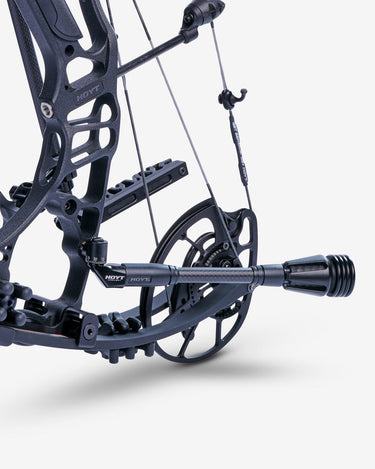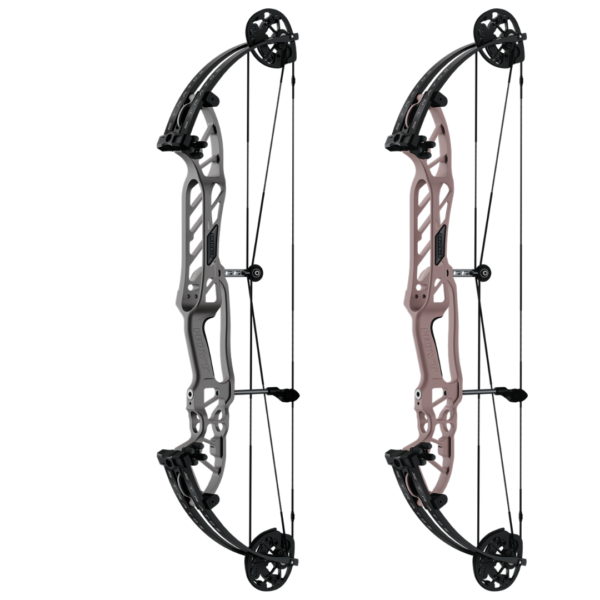Discover the very best Bow Stabilizers for each Archer's Needs
Discover the very best Bow Stabilizers for each Archer's Needs
Blog Article
Optimize Your Archery Precision With These Bow Stabilizer Techniques
One important element that can dramatically impact your performance is the correct usage of bow stabilizers. Whether you are an experienced archer looking to fine-tune your skills or a beginner anxious to improve your precision, mastering these bow stabilizer methods could be the key to hitting your mark with exceptional uniformity.
Benefits of Making Use Of Bow Stabilizers
Using bow stabilizers can substantially boost an archer's precision and general efficiency by lessening bow torque and resonance. Bow torque, triggered by the unequal distribution of weight in the bow, can lead to disparities in shot placement. By affixing a bow stabilizer, the weight is rearranged, reducing the effects of torque and assisting the archer accomplish an extra constant shot. Additionally, bow stabilizers wet resonance, which not just boosts the convenience of shooting however also stops the bow from leaping upon release, thus aiding in preserving correct objective.
Additionally, bow stabilizers can help in holding the bow stable, especially during windy conditions or when shooting from longer distances. The included weight at the front of the bow offers stability and equilibrium, enabling the archer to concentrate on intending without the distraction of bow activity. Overall, the benefits of using bow stabilizers extend past just accuracy, boosting the archer's experience and efficiency in various shooting scenarios.
Selecting the Right Bow Stabilizer
Picking the appropriate bow stabilizer is critical for enhancing your archery tools and boosting shooting performance. Heavier stabilizers can help decrease bow torque and soak up more resonance, leading to a steadier objective.

Lastly, think about the style of the stabilizer. Some stabilizers include adjustable weights or dampeners that allow you to customize the balance and feeling of your bow. Eventually, selecting the right bow stabilizer includes discovering an equilibrium between weight, style, material, and size to improve your shooting accuracy and total performance.
Proper Installment Methods
To ensure optimum efficiency and security in archery, grasping appropriate installation methods for your bow stabilizer is important. The very first step in installing a bow stabilizer is to identify the appropriate positioning on your bow.
Next, securely attach the stabilizer to the bow using the appropriate placing hardware. Some stabilizers come with adjustable weights that can be included or gotten rid of to tweak the equilibrium of your bow.

Adjusting Stabilizer Weight and Size
After ensuring the proper setup of your bow stabilizer, the next step involves readjusting the weight and length to enhance its performance in boosting archery precision. The weight of the stabilizer plays an important function in reducing bow movement throughout the shot cycle.
A longer stabilizer can supply greater stability by boosting the range in between the bow and the weight at find more information the end of the stabilizer. Conversely, a shorter stabilizer offers more maneuverability and may be chosen by archers that value dexterity and fast activities during shooting.
Advanced Stabilizer Tuning Tips
Achieving optimum bow stability and precision in archery requires a nuanced strategy to advanced stabilizer tuning. Advanced stabilizer tuning entails fine-tuning numerous parts to improve the bow's balance, decrease vibration, and boost overall precision.
An additional essential aspect of sophisticated stabilizer adjusting is optimizing the damping buildings of the stabilizer system. This can be accomplished by incorporating added moistening devices such as rubber dampeners or harmonic stabilizers to even more reduce vibration and sound. Moreover, exploring different products for the stabilizer building and construction, such as carbon fiber or aluminum, can additionally influence the bow's performance by altering its weight distribution and tightness. By carefully tweak these sophisticated stabilizer components, archers can maximize their accuracy and uniformity on the array or in competitors.
Conclusion
In conclusion, taking full advantage of archery accuracy can be attained through the correct choice, installment, and change of bow stabilizers. On the important link whole, including bow stabilizers into archery technique can lead to enhanced performance and boosted accuracy.
Making use of bow stabilizers can substantially improve an archer's precision and overall efficiency by reducing bow torque and vibration. Longer stabilizers offer better stability and balance, specifically for long-distance capturing, while shorter stabilizers provide even more adaptability and are much easier to navigate in limited rooms (bow stabilizer). Carbon fiber stabilizers are resilient and light-weight, while aluminum stabilizers are robust and supply outstanding resonance dampening
A longer stabilizer can provide better security by boosting the range in between the bow and the weight at the end of the stabilizer.One more essential facet of advanced stabilizer adjusting is enhancing the damping homes of the stabilizer system.
Report this page